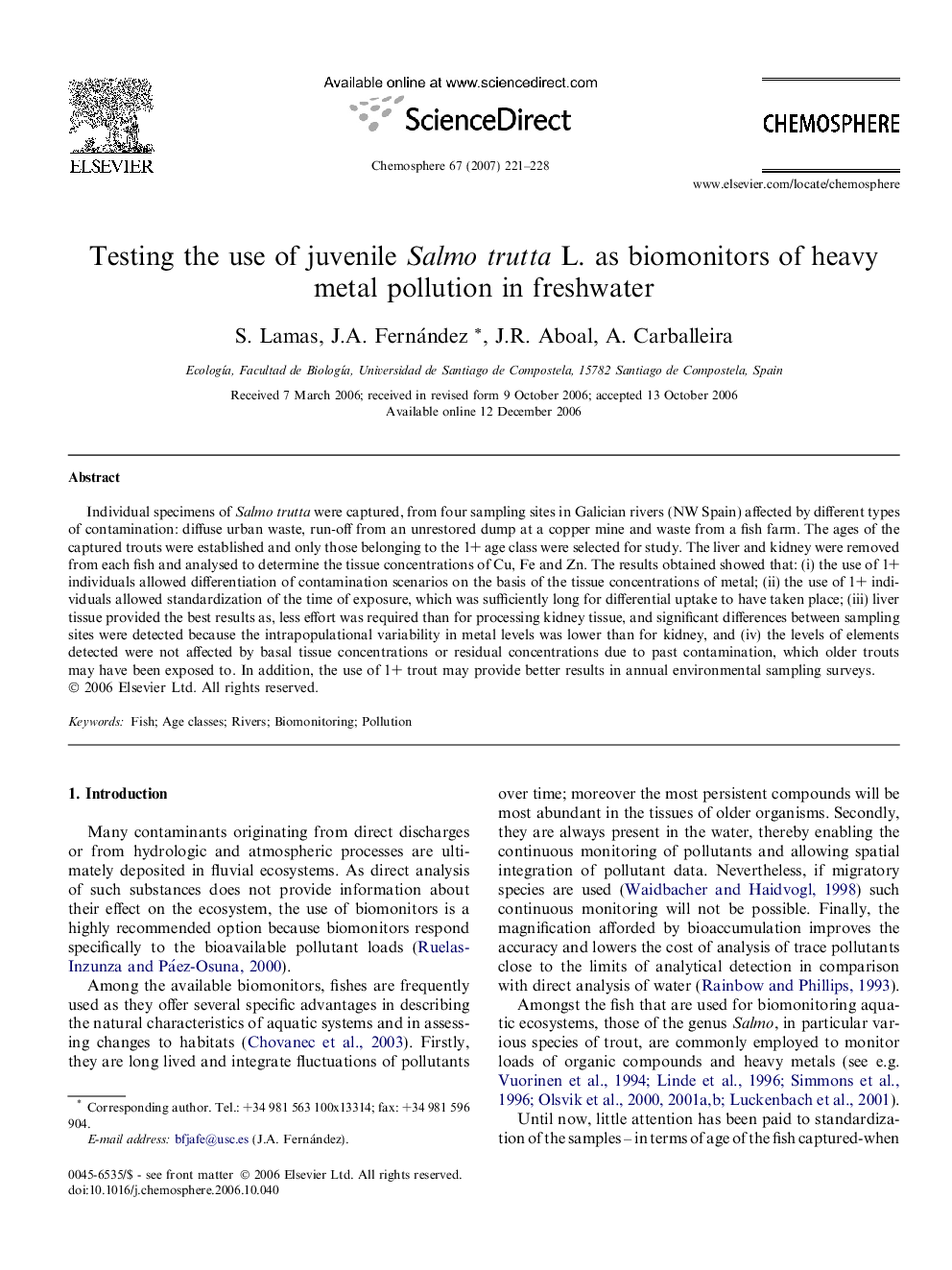| Article ID | Journal | Published Year | Pages | File Type |
|---|---|---|---|---|
| 4415613 | Chemosphere | 2007 | 8 Pages |
Abstract
Individual specimens of Salmo trutta were captured, from four sampling sites in Galician rivers (NW Spain) affected by different types of contamination: diffuse urban waste, run-off from an unrestored dump at a copper mine and waste from a fish farm. The ages of the captured trouts were established and only those belonging to the 1+ age class were selected for study. The liver and kidney were removed from each fish and analysed to determine the tissue concentrations of Cu, Fe and Zn. The results obtained showed that: (i) the use of 1+ individuals allowed differentiation of contamination scenarios on the basis of the tissue concentrations of metal; (ii) the use of 1+ individuals allowed standardization of the time of exposure, which was sufficiently long for differential uptake to have taken place; (iii) liver tissue provided the best results as, less effort was required than for processing kidney tissue, and significant differences between sampling sites were detected because the intrapopulational variability in metal levels was lower than for kidney, and (iv) the levels of elements detected were not affected by basal tissue concentrations or residual concentrations due to past contamination, which older trouts may have been exposed to. In addition, the use of 1+ trout may provide better results in annual environmental sampling surveys.
Related Topics
Life Sciences
Environmental Science
Environmental Chemistry
Authors
S. Lamas, J.A. Fernández, J.R. Aboal, A. Carballeira,
